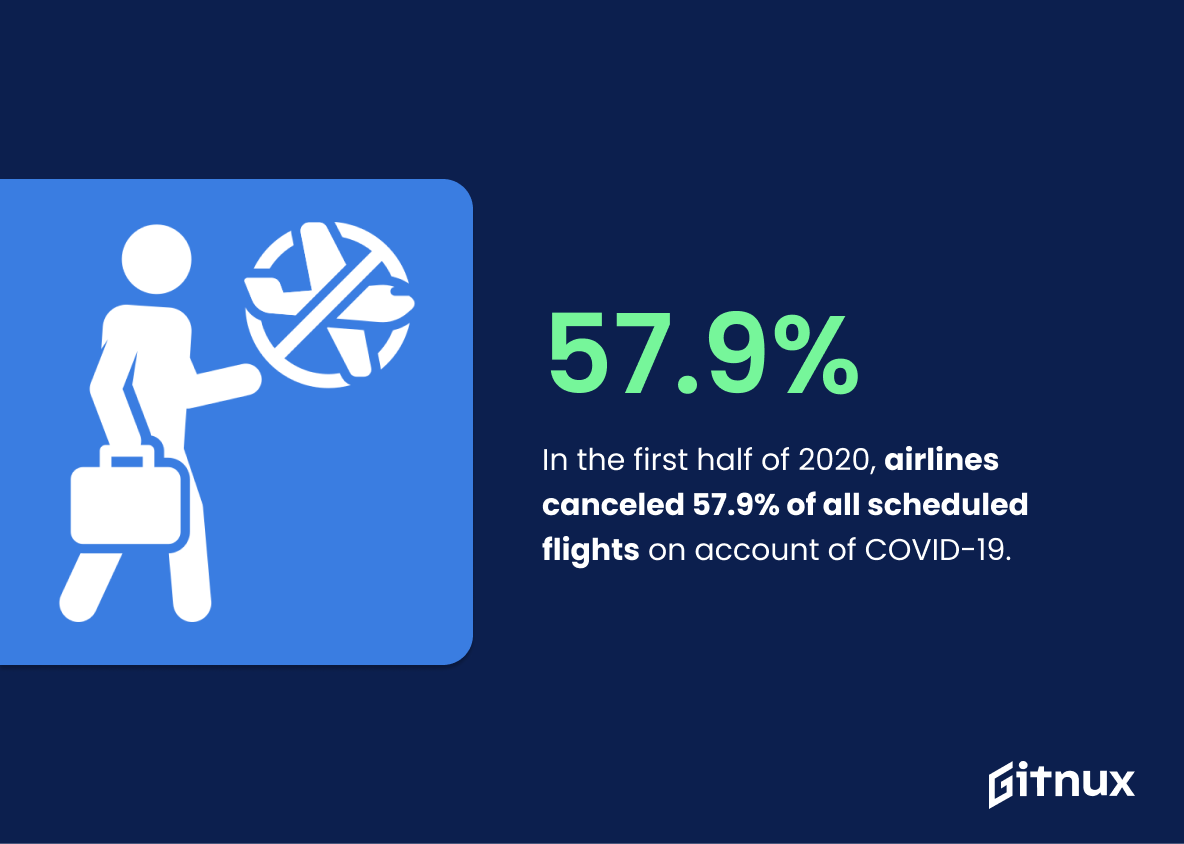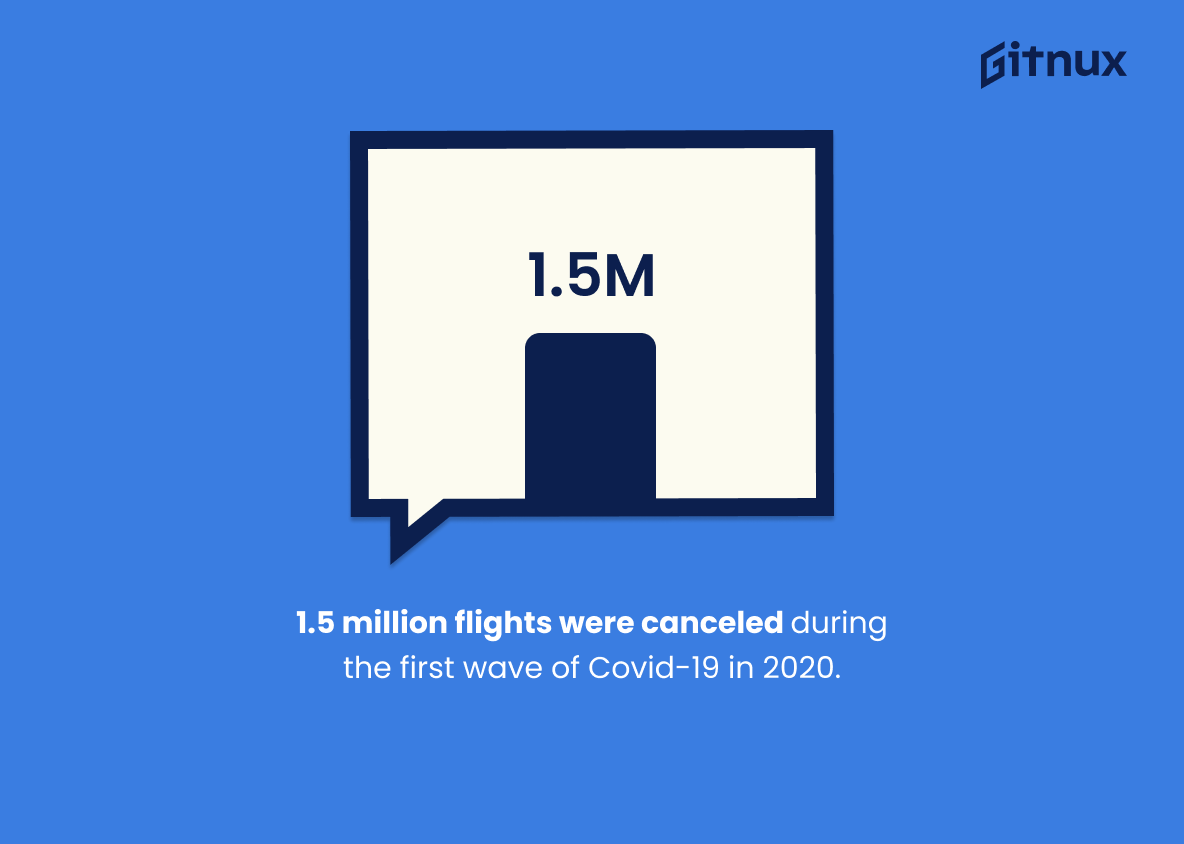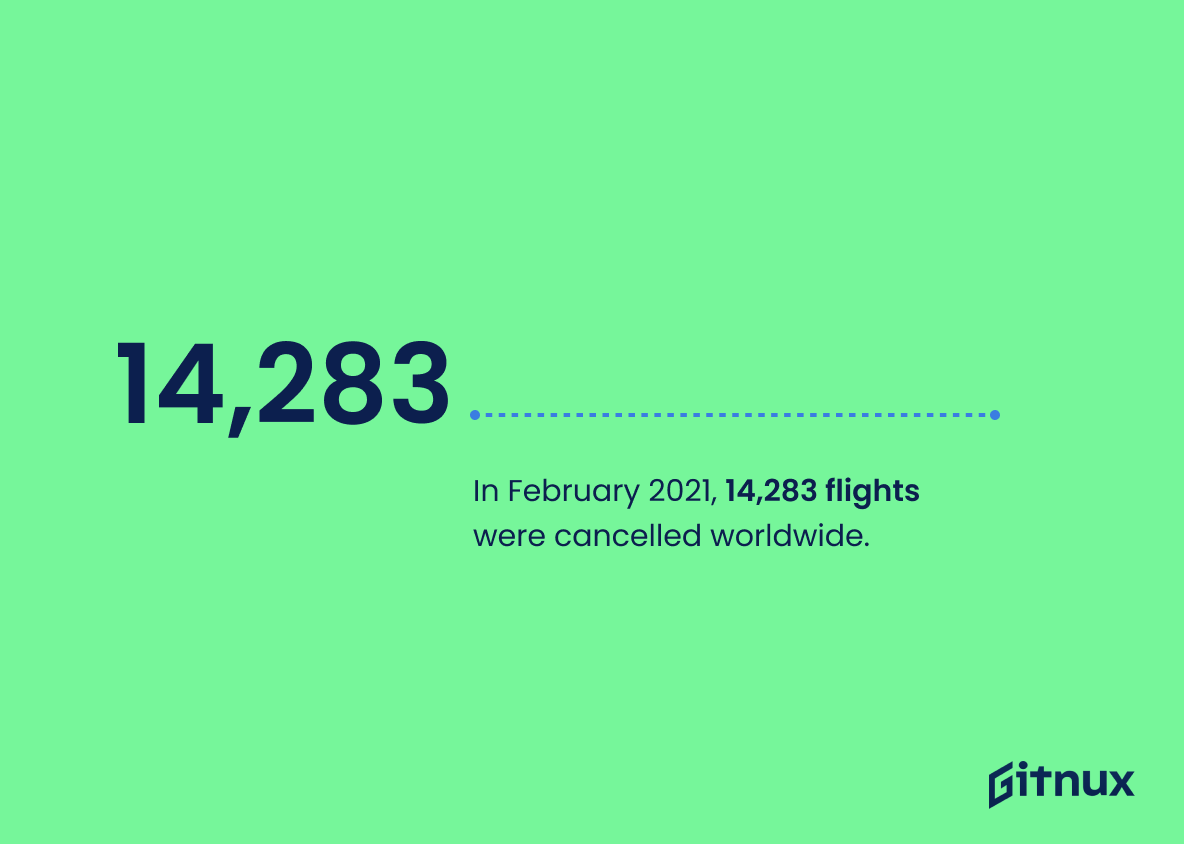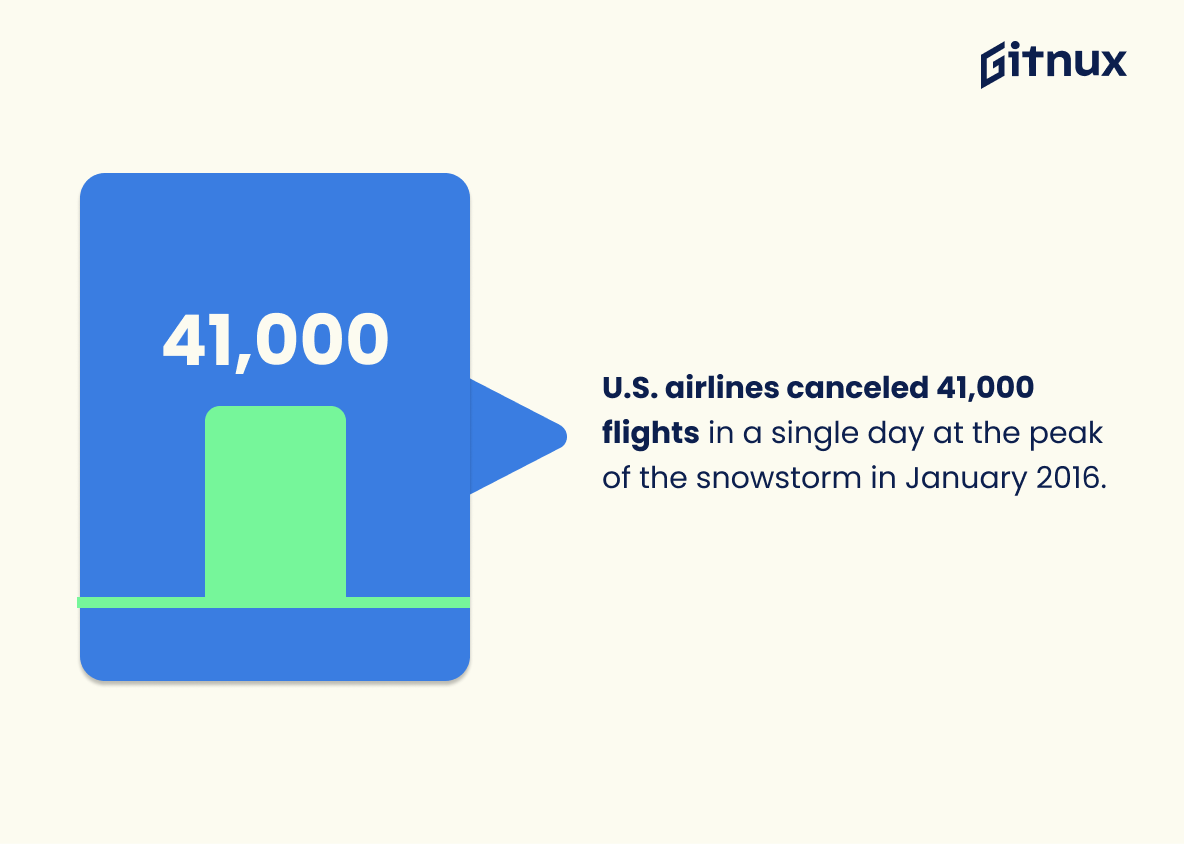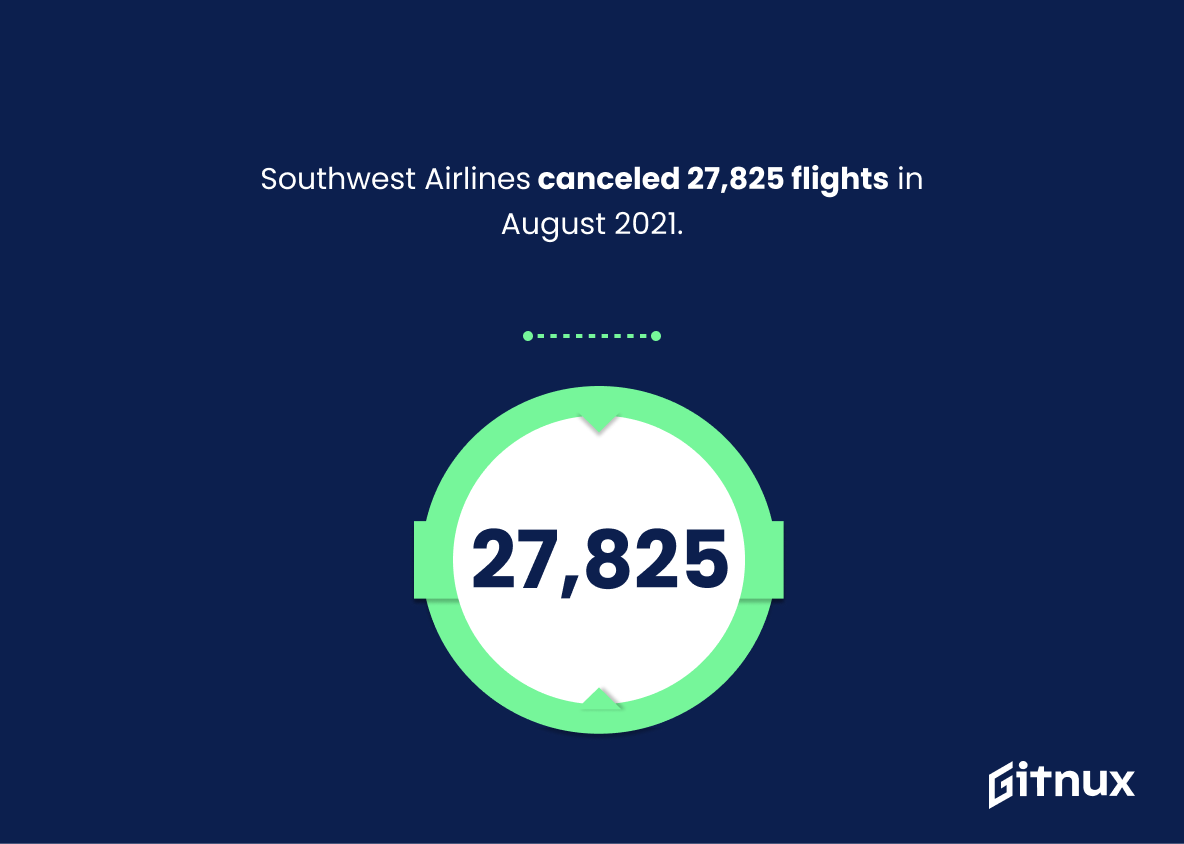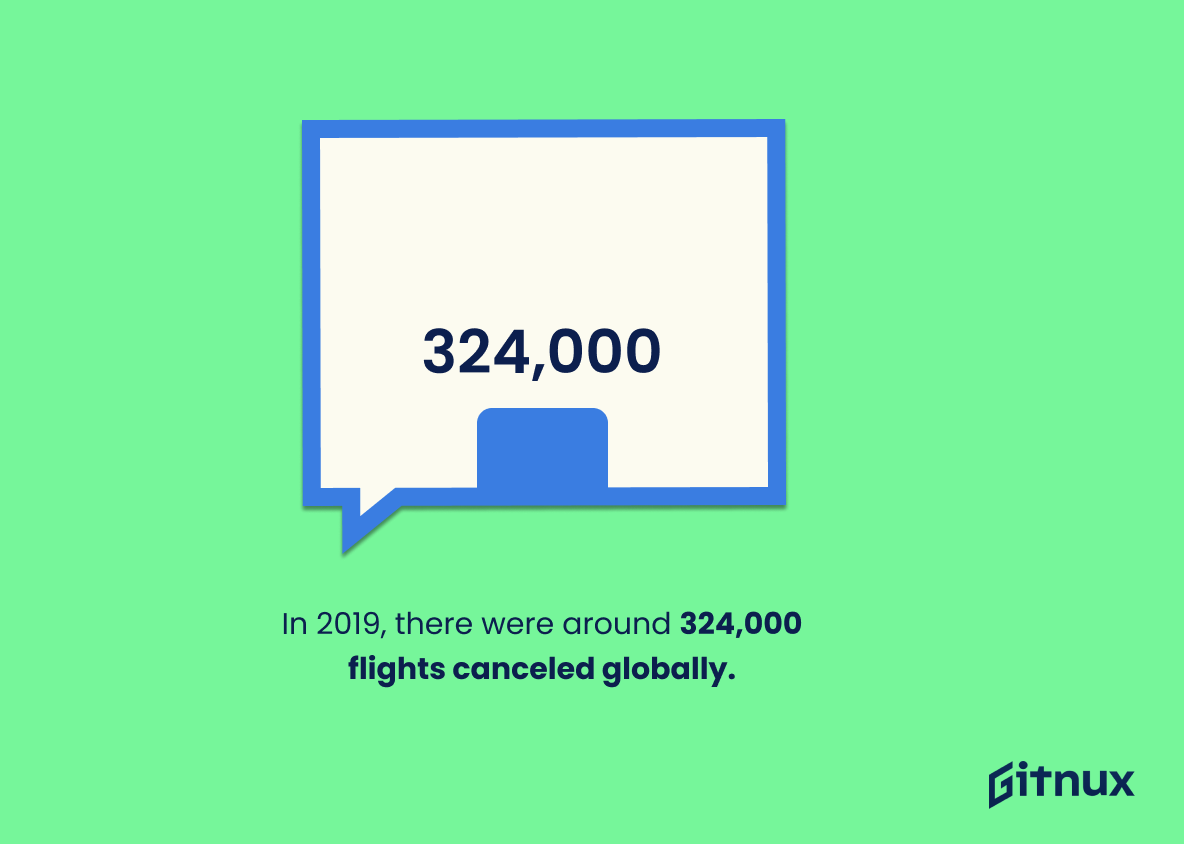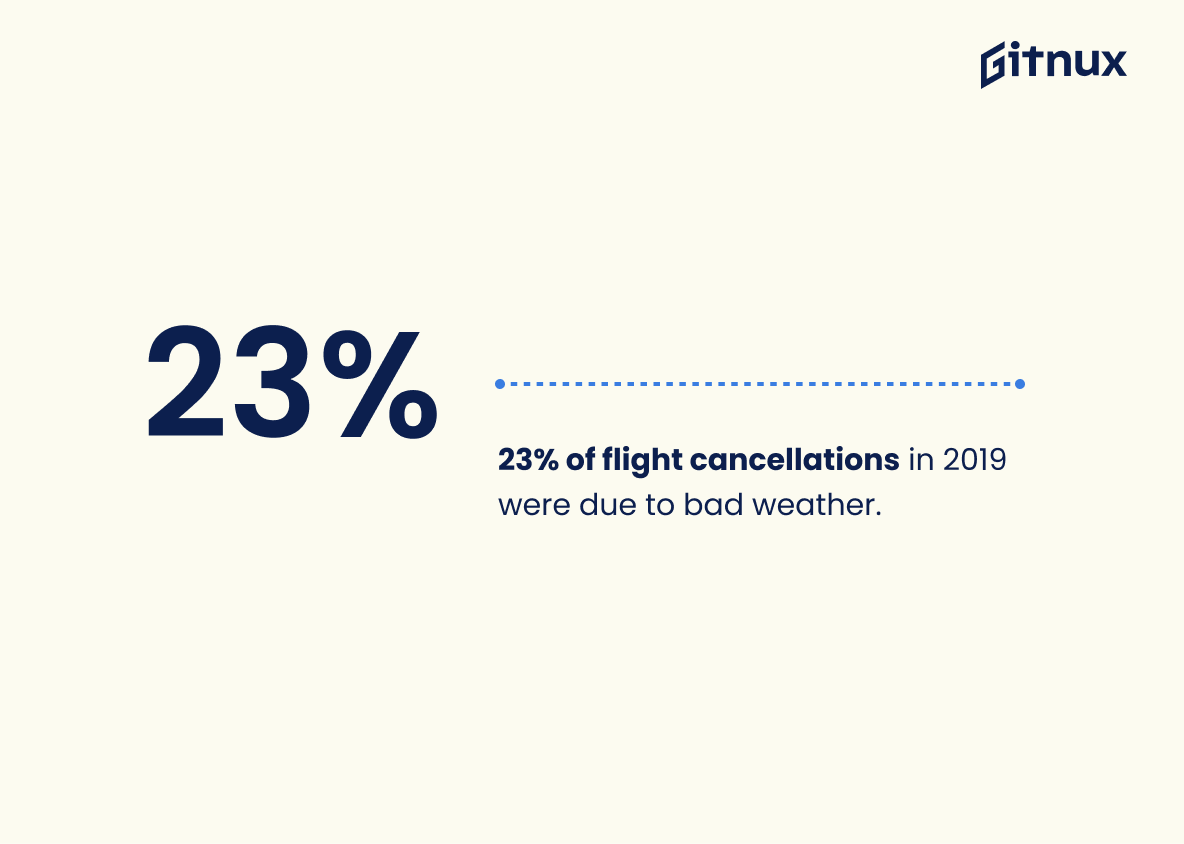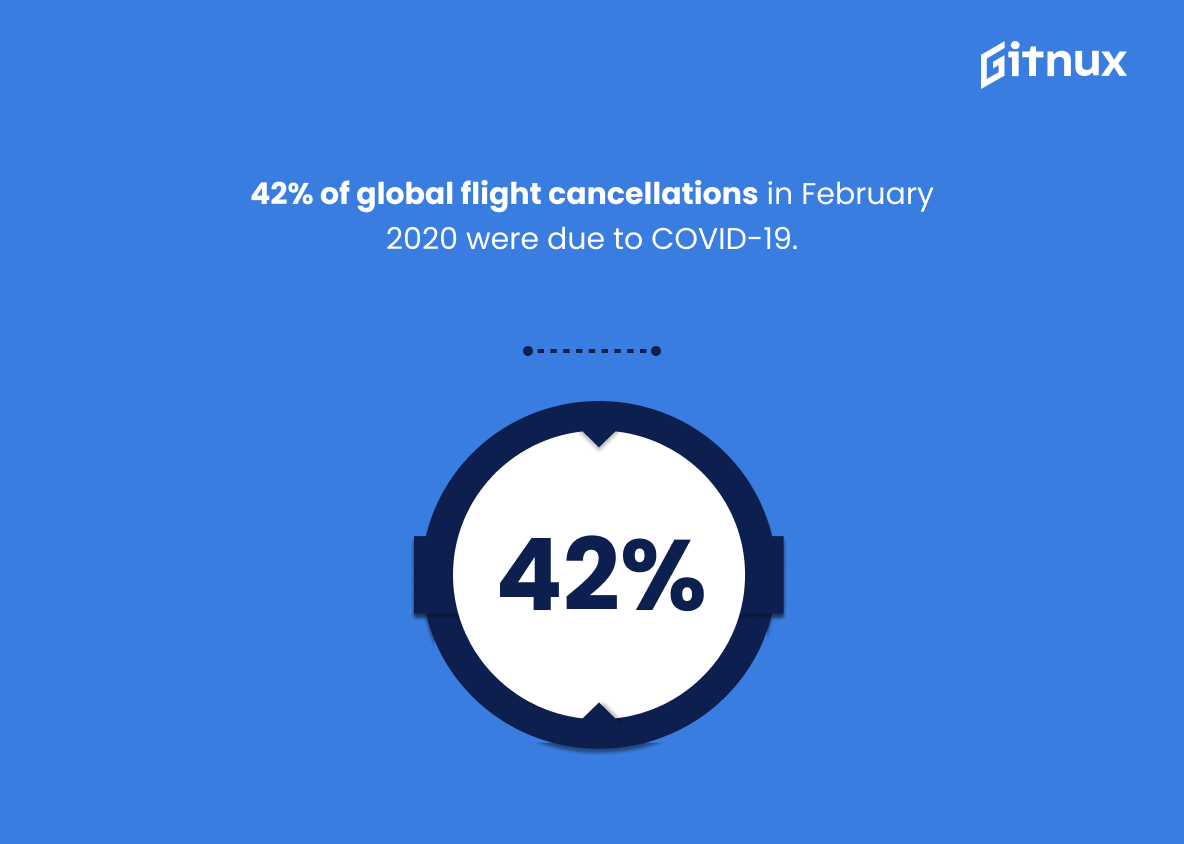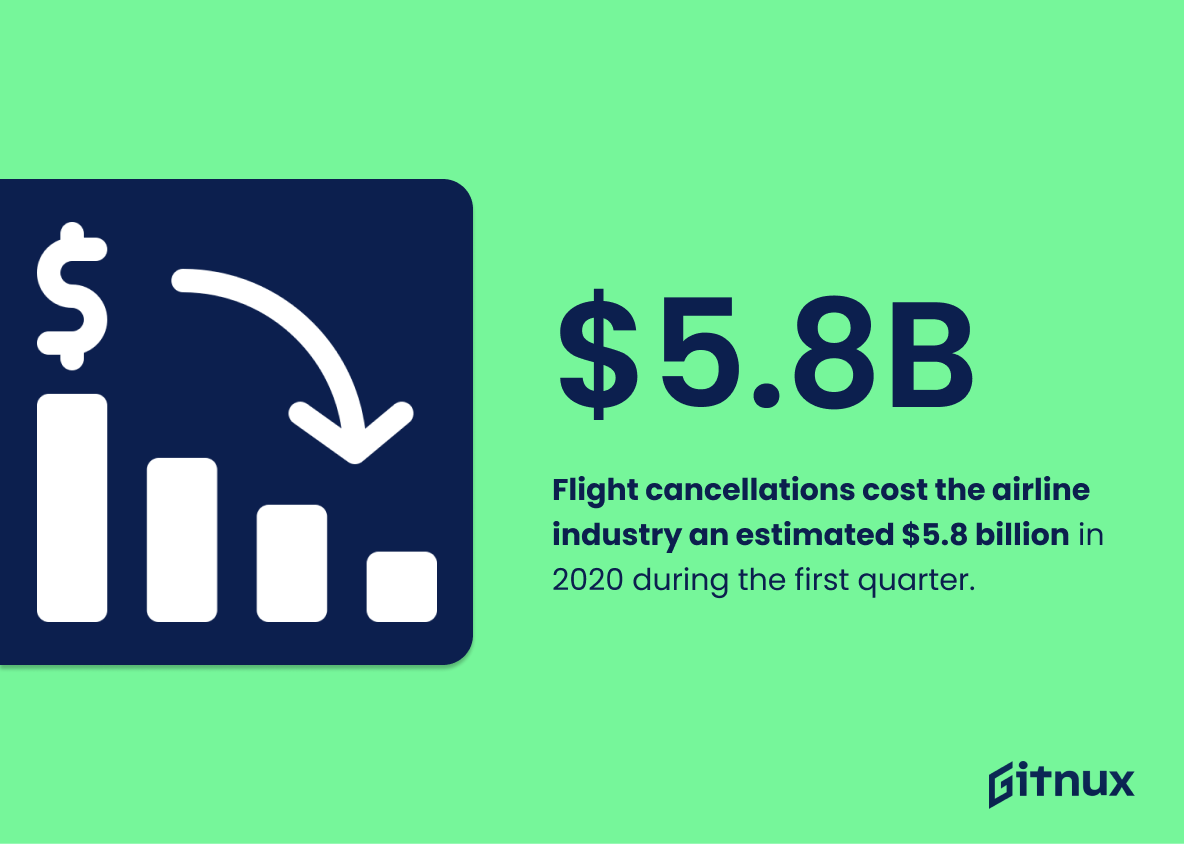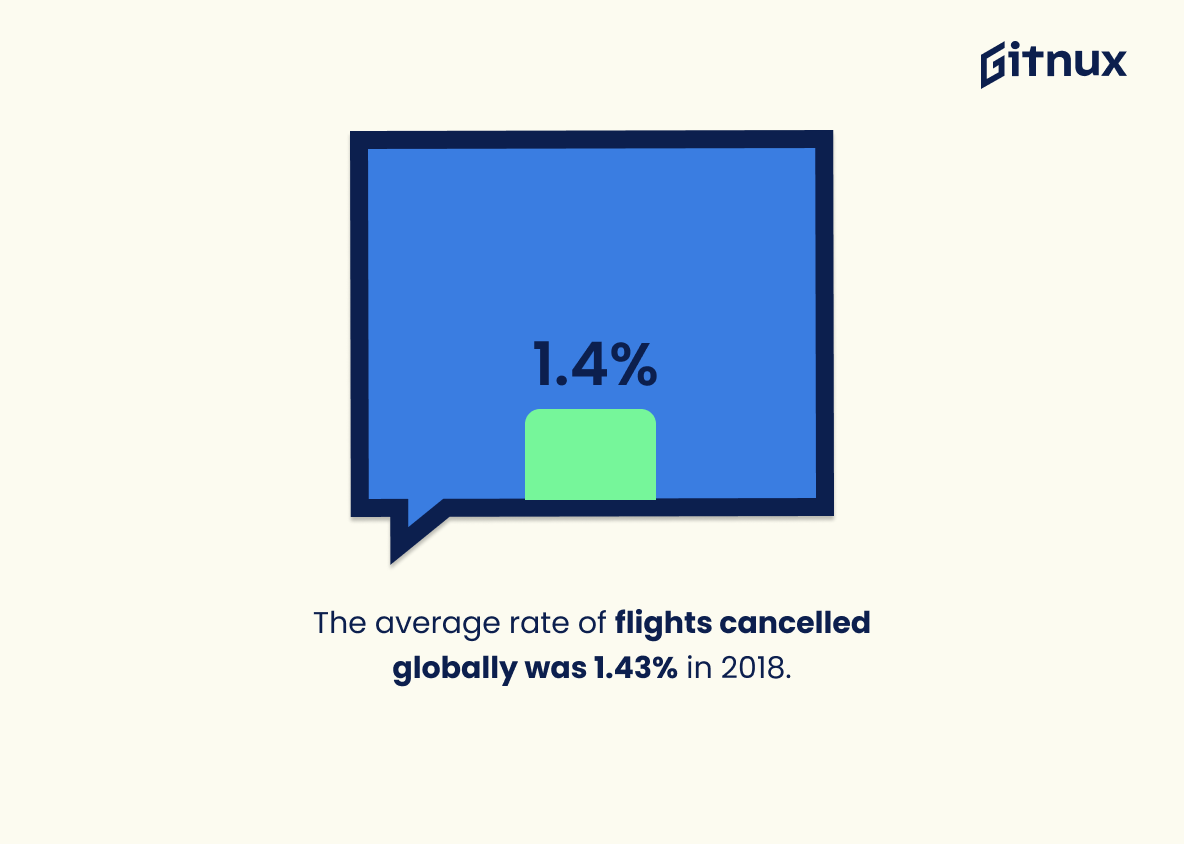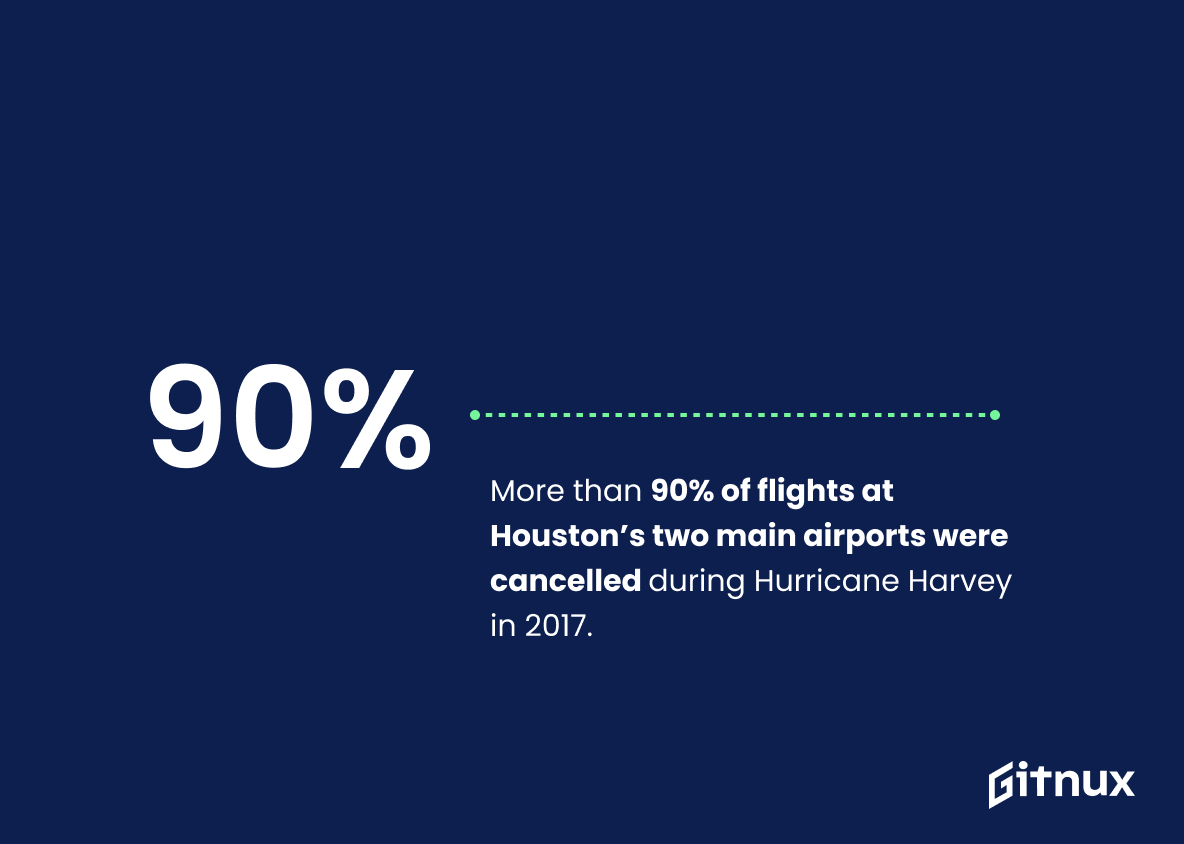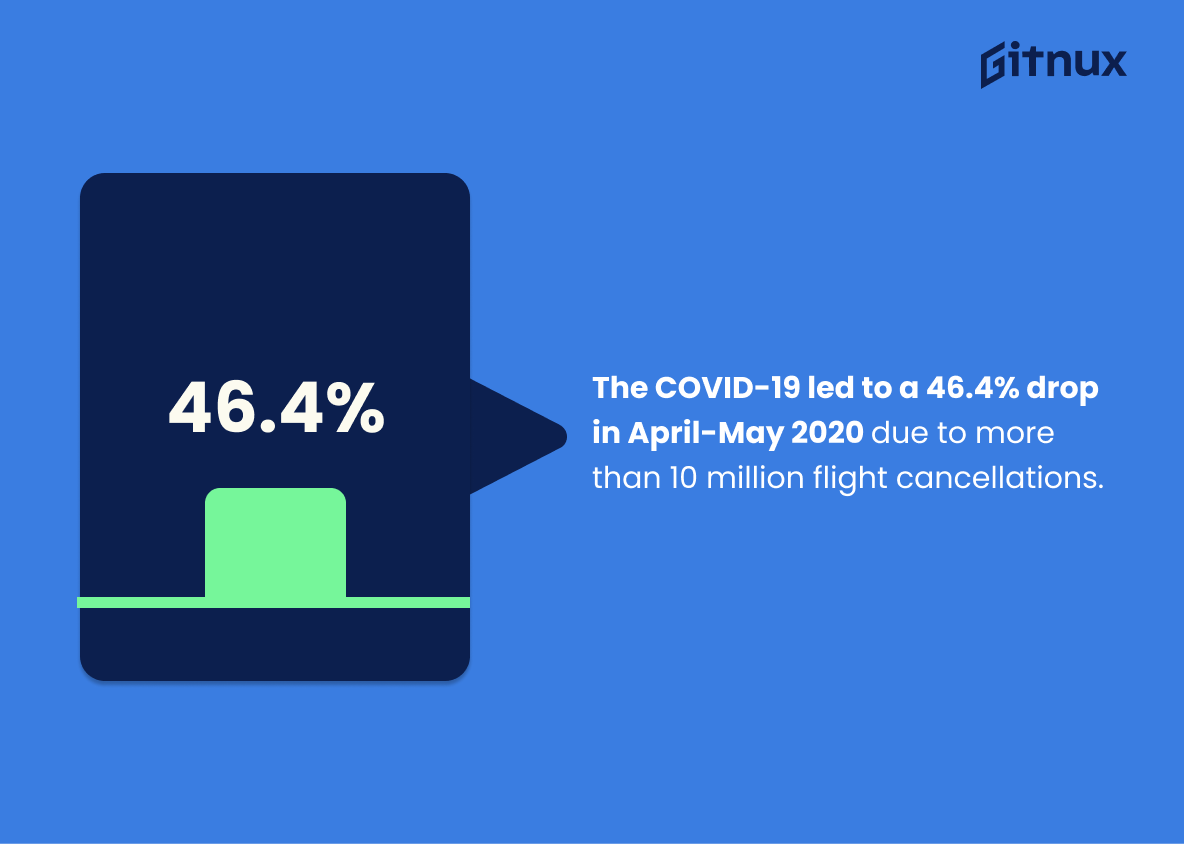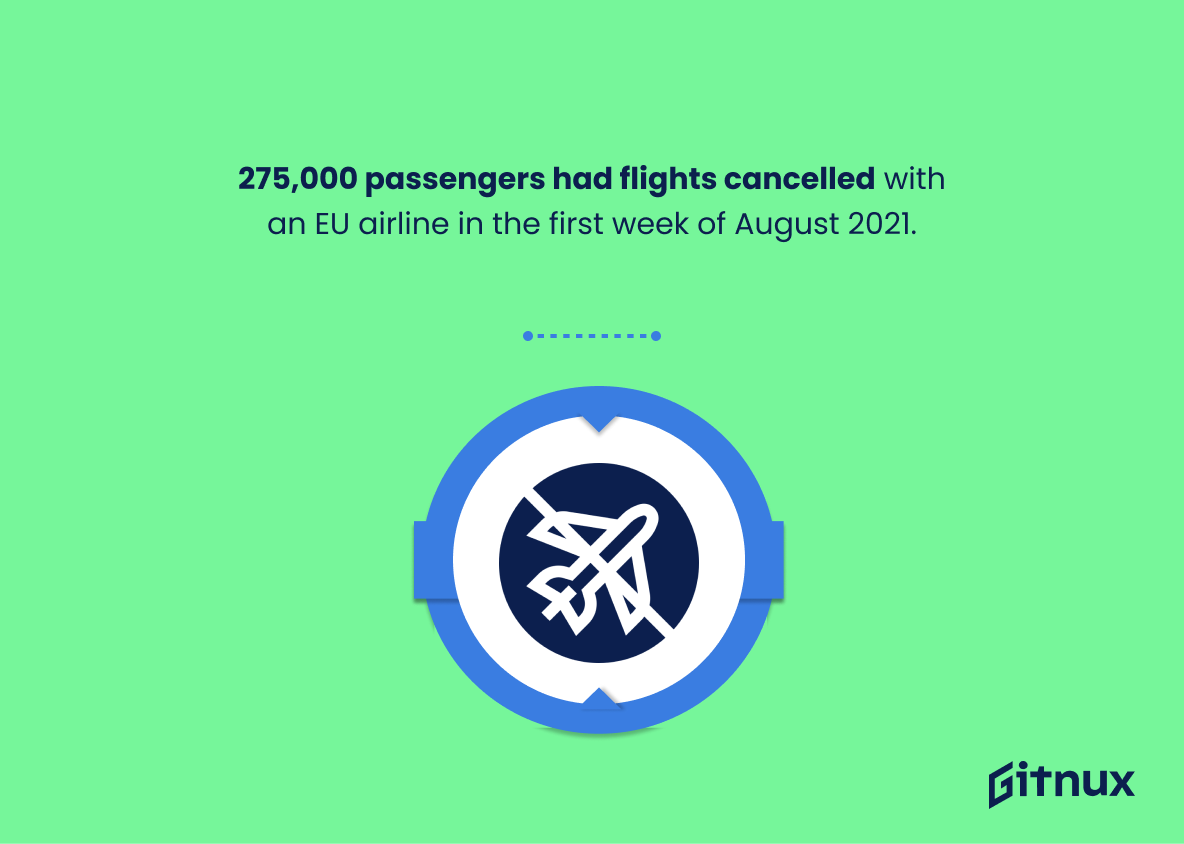In the unpredictable world of travel, flight cancellations can wreak havoc on even the most well-planned itinerary. Whether it’s due to sudden weather changes, mechanical issues, or unexpected circumstances, dealing with a cancelled flight can be frustrating. To help you better understand the likelihood of facing a flight disruption, and navigate it effectively, our comprehensive guide unpacks the complexities surrounding flight cancellation statistics across the globe.
We’ll delve into the reasons behind cancellations, examine the airlines with the highest and lowest cancellation rates, and provide invaluable insights to impede such traveler’s nightmare and enhance your overall travel experience.
The Latest Flight Cancellation Statistics Unveiled
In the first half of 2020, airlines canceled 57.9% of all scheduled flights on account of COVID-19.
Highlighting the chilling statistic that ‘In the first half of 2020, airlines canceled 57.9% of all scheduled flights due to COVID-19’ serves as a stark reminder of the pandemic’s monumental impact on global air travel. In the tapestry of flight cancellation statistics, this particular number threads a grim picture of grounded aircrafts and abandoned air routes.
It’s a potent illustration of the whirlwind of disruptions for airlines, passengers, and related industries, capturing the bandwidth of cancellations that rippled worldwide and unraveled the aviation industry seams. Without doubt, this percentage paints a vivid before-and-after, and is a critical waypoint in tracing flight operations in the pandemic era.
1.5 million flights were canceled during the first wave of Covid-19 in 2020.
Highlighting the colossal number of 1.5 million flights canceled during the first wave of Covid-19 in 2020 paints a vivid image of the virus’s catastrophic impact on the airline industry. It underscores the magnitude of disruption the usually bustling skies suffered, providing readers with a grasp on the operational havoc and grave economic ramifications caused by the pandemic.
This compelling figure serves as a stark backdrop for a narrative on flight cancellation statistics while fostering a deeper understanding of the crisis’s far-reaching implications for global air travel. The data piece sets the stage for further analysis or comparative studies, emphasizing how exceptional this period was in aviation history.
In February 2021, 14,283 flights were cancelled worldwide.
Reflecting on the striking figure of 14,283 flights cancelled globally in February 2021, one can fathom the profound influence it has on the narrative of Flight Cancellation Statistics blog post. This number serves as an exemplar of the complexities involved in the aviation industry. It offers a detailed lens into the fascinating yet challenging world of flight operations, painting a picture of potential disruptions that could range from atmospheric disturbances to fleet management issues, thereby influencing planning, logistics, airline profitability and hence, the global economy.
Furthermore, these cancellation figures play a crucial role in determining key performance indicators in the aviation industry while also contextualizing the passenger experiences in a broader light. From airline perspectives, this figures could inform strategies to minimize future disruptions and improve customer satisfaction.
U.S. airlines canceled 41,000 flights in a single day at the peak of the snowstorm in January 2016.
Painting a dramatic picture in bold strokes, this intriguing number takes center stage: a staggering 41,000 flights extinguished in a single day by a rampant snowstorm in January 2016. It remains a postcard from the past, a potent reminder of the chokehold that Mother Nature can have on the aviation industry.
Recalling this episode in a blog dealing with flight cancellation statistics not only brings in historical context, but more importantly, it underlines the scale and intensity of unexpected weather events on air travel. It creates a frame of reference for comparing and discussing the reasons and frequency of flight cancellations, while emphasizing the crucial role of weather conditions in the smooth functioning of airline schedules.
Southwest Airlines canceled 27,825 flights in August 2021.
Spotlighting the colossal figure of 27,825 flight cancellations by Southwest Airlines in August 2021, invigorates the thread of discussion on the volatile scenario of flight cancellations. As a pivotal player in the industry, Southwest’s disruption imbues the narrative with the tangible impact of underlying factors, be it weather conditions, staffing issues, or maintenance hiccups.
This statistic underpins the gravity of the situation, serving as a compelling argument for in-depth exploration of the causative dynamics and their ripple effects on travelers, airlines, and the travel economy at large. It’s more than just a number, it’s a testament to the unpredictability and inherent complexity of the aviation industry.
46.4% flight cancellations in 2020 was due to Covid-19.
Painting a vivid picture, the stratosphere-altering statistic of 46.4% flight cancellations in 2020 attributed to Covid-19 tells a tale of a global industry grappling with unseen challenges. This distinctive figure punctuates the narrative of a year where the skyways echoed in unprecedented silence, the heartbeat of aviation almost stilled by an invisible enemy.
In the broader context of flight cancellation statistics, this percentage serves as a stark indictment of the impact of global events on aviation, redefining the contours of the industry’s realities and expectations. Offering more than mere numerical value, it informs readers about the scale of disruption encountered by this industry, becoming a pivotal talking point in the discourse of flight cancellation metrics both past, present, and future.
In 2019, there were around 324,000 flights canceled globally.
Highlighting the whopping figure of 324,000 global flight cancelations in 2019 underlines the immense scope of the issue. These figures serve as a potent reminder of the unpredictable nature of air travel which can be impacted by a myriad of factors ranging from inclement weather to logistical issues.
Thus, it provides the reader with a contextually-rich perspective on the flight cancellation trends, emphasizing the significance of understanding these statistics for better planning and preparedness when flying. These numbers are not just digits, but are stories of trips canceled, business meetings missed, or holidays disrupted, grounding an otherwise abstract topic in the reality of everyday life.
23% of flight cancellations in 2019 were due to bad weather.
Peering through the lens of this statistic, a reader can gain a clearer perspective on the delicate dance between aviation and the elements. The number – 23% of flight cancellations in 2019 being attributed to bad weather – serves as a tangible representation of the unpredictable nature of our atmosphere and its significant impact on the aviation industry.
Not only does it aptly illustrate the critical need for meticulous weather monitoring systems within the sector, but it also underscores the necessity for passengers to maintain a flexible travel itinerary. Ultimately, by diving into the heart of this statistic, we can better appreciate the challenges that keep flights from taking to the skies, and realize that sometimes, it’s quite literally not fair weather flying.
Approximately 18% of the flight cancellations happened within 24 hours of their departure.
Shining a spotlight on the stark reality of flight cancellations, the fact that roughly 18% occur within 24 hours of departure presents a critical data point. This figure punctures the illusion of certainty in air travel, highlighting that even just on the cusp of flight embarkment, passengers may face the inconvenience of an unexpected cancellation.
Not only does it illuminate the vulnerability and unpredictability of flight schedules, but it also underscores the urgency and necessity for airlines to enhance customer communication strategies, bolster contingency plans, and improve service reliability standards. In the realm of flight cancellation statistics, this percentage serves as a pivotal benchmark against which to measure progress or setbacks.
42% of global flight cancellations in February 2020 were due to COVID-19.
Highlighting that ‘42% of global flight cancellations in February 2020 were due to COVID-19’ serves as a beacon, illuminating the dramatic impact of external global events on airline operations. This piece of data draws a vivid picture of COVID-19 as a game-changer, altering the course of aviation history with its domino effect. In digesting this statistic, one can begin to fully comprehend the unprecedented and sweeping changes that the pandemic has precipitated within the aviation world.
Flight cancellations cost the airline industry an estimated $5.8 billion in 2020 during the first quarter.
Illuminating the fiscal impact of flight cancellations, we weave a tale of a staggering $5.8 billion lost by the airline industry in 2020’s initial quarter. This monetary figure dances to a rhythm of lost revenues for airlines, underlining the economic intricacy of flight cancellations. It sketches a vivid financial portrait, the magnitude of which portrays just how critical understanding such data is.
In navigating uncharted skies within a blog post focused on flight cancellation statistics, this monumental sum serves as a beacon, guiding our narrative throughout the turbulent impact that flight cancellations have on the airline industry’s fiscal health.
The average rate of flights cancelled globally was 1.43% in 2018.
The tapestry of Flight Cancellation Statistics is woven with intriguing threads such as the 1.43% global flight cancellation rate in 2018. This intriguing data point shines a laser beam on the prevalence of interruptions in the aviation sector, offering valuable context to the overall narrative. It’s like the heartbeat pulsating beneath the surface, throwing light on a brewing issue.
Our venture down the rabbit hole of flight cancellations begins here, drumming to the rhythm of this statistical resonance. It provides an aerial view of the scope of cancellations, ultimately opening up room for further discussions on the why’s, how’s and countermeasures within the captivating world of air travel.
More than 90% of flights at Houston’s two main airports were cancelled during Hurricane Harvey in 2017.
Highlighting the statistic around Hurricane Harvey gives an impactful illustration of how extreme weather events can drastically affect air travel operations. This astounding flight cancellation rate—exceeding 90%—at Houston’s two principal airports underscores the significant impact a single weather event can have on the entire aviation system. By including this statistic, it allows readers to understand, in stark terms, how natural disasters can disrupt flight schedules and contribute significantly to overall flight cancellation numbers.
The COVID-19 led to a 46.4% drop in April-May 2020 due to more than 10 million flight cancellations.
Feeling the turbulent turbulence of reality, the aviation world had to brace for severe impact when the COVID-19 storm struck. In the April-May 2020 period, the sky almost resigned its usual scenery of crisscrossing contrails, as over 10 million flight cancellations plunged flight activities by a startling 46.4%.
This statistic, slicing through the heart of our air-travel savvy society, paints a stark picture of the devastating blow dealt by the pandemic on global mobility, emphasizing the tumultuous times that airlines, stakeholders, and travelers had to navigate through. Within the larger narrative of Flight Cancellation Statistics, this figure serves as a striking chapter, underscoring the massive scale of disruptions that echoed through the usually vibrant air travel network during the peak of this worldwide health crisis.
275,000 passengers had flights cancelled with an EU airline in the first week of August 2021.
Within the realm of flight cancellation statistics, a skyrocketing number like 275,000 passengers experiencing cancellations from EU airlines in the first week of August 2021 becomes a force to be reckoned with. This figure is like a blaring klaxon, sending strong signals about possible operational, logistical or systemic issues within the EU airline industry.
From the lens of the passengers, the omnipotent dread of getting a ‘Flight Cancelled’ notification is made tangible by this number. It represents delayed journeys, disrupted plans, and hours spent in airport lounges—an insight that adds color to the black and white world of data representation.
Within the world of airlines, this statistic reads like an alarm code. It makes a powerful point about customer satisfaction, potential compensation costs and the overall reputation of airlines. Furthermore, for policy makers and regulators within the aviation industry, such a significant figure underscores the need for regulatory scrutiny and possible enhancements to passenger rights legislation.
So, this striking number is not just a ‘statistic’. It stands at the crossroads of passenger experience, airline operations, and industry regulations, holding deep implications for each.
41% of cancelled flights in the US account for almost half of all passengers affected by flight disruption.
In the vast sky of flight cancellation statistics, the fact that 41% of cancelled flights in the US accounts for nearly half of all passengers affected by disruptions emerges as a glaring spotlight. It throws a harsh light on the immense ripple effect of flight cancellations, clearly illustrating the magnitude of the issue.
This percentage paints a vivid picture of the potential inconvenience millions of passengers undergo, ergo emphasizing the urgency to devise effective solutions to minimize this disruption. As we dive deeper into the ocean of data, this statistic is like a buoy keeping us afloat, helping us navigate the impacts of flight cancellations more efficiently.
Flights to China saw a 75% cancellation rate during January 2020 due to Covid-19.
Highlighting the 75% cancellation rate for flights to China during January 2020 offers astute insight into the profound impact of external global events, like the advent of the Covid-19 pandemic, on air travel. It underscores the volatility of the airline industry in situations of global crises and demonstrates how quickly flight schedules can be disrupted.
This stark statistic offers readers a quantifiable yardstick to measure and understand the scale of disruption caused by unpredictable circumstances. Comparable metrics in the future can help assess the industry’s resilience and preparedness for similar occurrences.
Conclusion
In the face of unpredictable circumstances such as bad weather, technical glitches, labor strikes or pandemics, flight cancellations are an unfortunate reality in the aviation industry. As major airlines strive to improve their operational efficiency, the industry-wide statistics surrounding flight cancellations continue to shape the customer experience. Understanding these statistics can help passengers make informed decisions about their travel plans and manage their expectations accordingly.
However, it is always important to prepare for potential disruptions, know your rights as a traveler, and take applicable measures to mitigate the inconvenience caused by flight cancellations. While these statistics are enlightening, they should not allow fear to take flight. Instead, let them serve as a guide in your travel planning process.
References
0. – https://www.www.statista.com
1. – https://www.www.globalair.com
2. – https://www.www.fool.com
3. – https://www.www.businessinsider.com
4. – https://www.www.flightstats.com
5. – https://www.www.scmp.com
6. – https://www.www.dataiq.co.uk
7. – https://www.www.bbc.com
8. – https://www.www.airhelp.com
9. – https://www.www.flightglobal.com
10. – https://www.www.routesonline.com
11. – https://www.www.cnbc.com
12. – https://www.www.bts.gov
13. – https://www.www.weforum.org
14. – https://www.www.cbsnews.com
